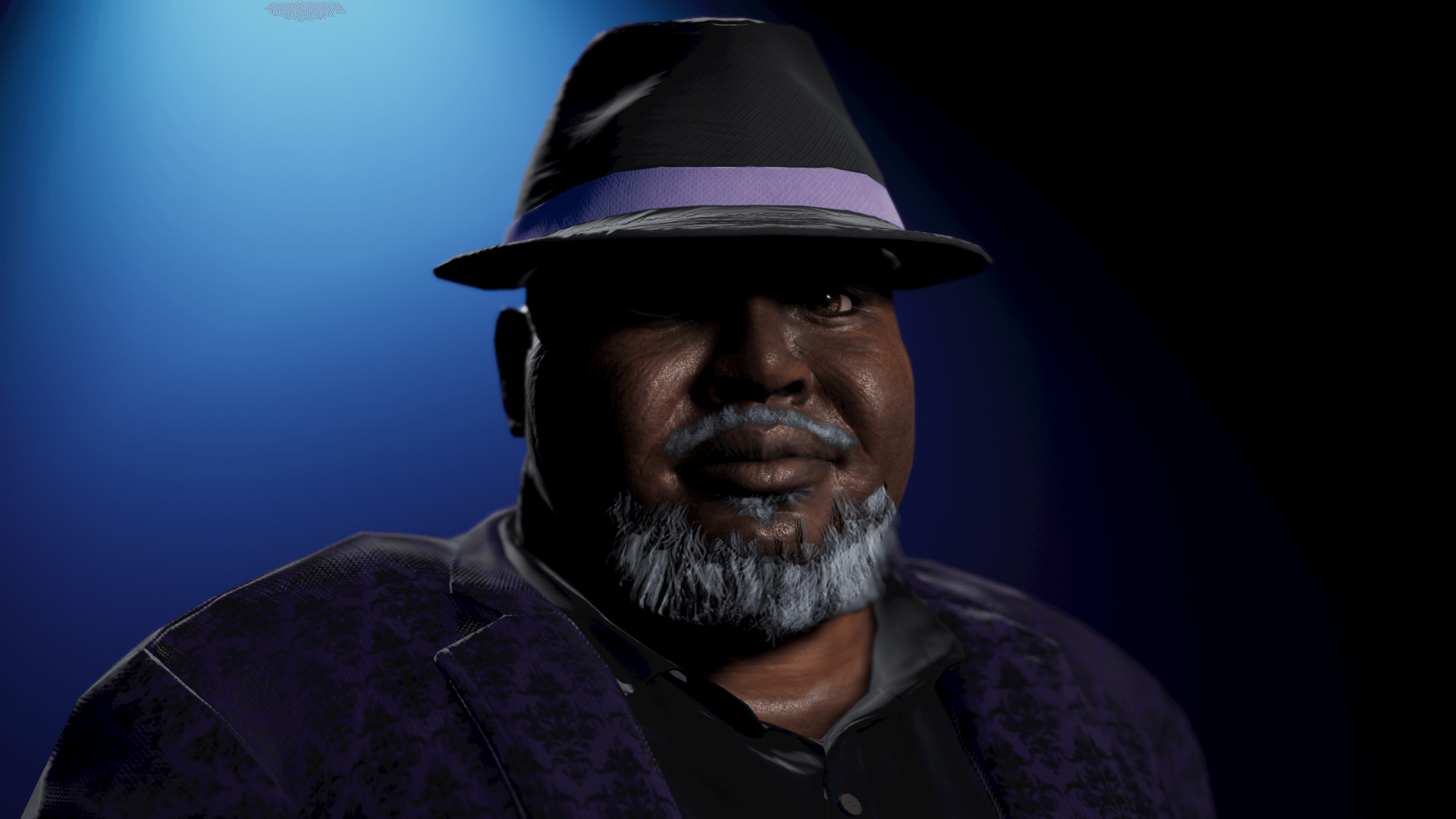After feedback on character design for my visual novel, my grizzled Noir Detective is drifting into an Old Jazz Musician. There's a reason I post the artwork: what has gone unmentioned in this feedback is that he's African American.
My first impression of this feedback was that this is a prejudice: White man in a hat = cop/detective. Black man in a hat = some kind of musical entertainer. (I didn't test a control group with a white man in a hat to be sure.)
But when I heard it again, rather than get defensive, my second thought was (since it's out there) I should let these comments inform what kind of character I'm creating. It wasn't what I'd intended, but sure, why not? This is what feedback is for, right?
My rationalization went something like this:
Old Noir Detective = Old Jazz Man
☑ Same gender, same generation, same country, same economic tier
☑ Associates with floozies and gangsters and other low-lifes
☑ Looked down on by authority, presumed guilt, underdog
☑ Has an implied history and seen some weird sh*t, knows some people are just bad.
☐ Has a defining hobby or quirk. (Didn't consider this before, and seems like an improvement)
☐ Carries a gun (nope, but also feel this is an improvement)
☐ Cynical, potentially self-destructive, bitter, Heart-on-sleeve (um…, not really but could be, I guess?)
☒ Hired to fix people's problems. Conveniently has an office where people make an appointment to have their problems fixed. (That would be a big nope.)
For about 10min I started redesigning the whole story to involve musical metaphors, and his esoteric knowledge shifted from books to music. In some ways the differences were cosmetic or superficial, and in some ways there wasn't any difference at all. Seemed like a win, just do the same story with a music twist.
I like the idea of an accidental detective. I like the musical aesthetics, and honestly think the visual potential is as strong, maybe even stronger (in a visual novel words will be scarce, ambience is everything). Unfortunately my story begins with a client bringing her problem to his office, but I can massage the plot to contrive a more likely introduction.
What I don't like is I started to feel like I was making a shuck n' jive character. Although no one admitted it (and I didn't push it), the origin was likely a racial stereotype, and making him a "jazz musician" feels more like a skin color than an archetype. I doubt I'd ever need to explain how a white guy is in a room telling everyone their business with authority – but a jazz musician? I also doubt I'd ever hear that an old white man in a hat must be here to entertain the guests. There's some real baggage here. I could ignore it, but I'm trying to be aware of it.
I'm still trying to make this work, but I feel I've erased any authority he would have. Miss Marple is just a little old lady that people dismiss, at the same time I don't find her to be especially empowering or positive as a character (she's barely a character, imho she's just a nosey lady who goes on vacation and people die). Meanwhile I actually find the toughguy detective tropes to be kind of a joke, there is no reason a skidrow noir detective would be hobnobbing with millionaires, he would be treated like a servant not flirted at by the boss's horny wife. I had a moment of wondering how that scene would play out. It wouldn't, and probably not for the noir detective either.
I thought I had hit on a clever cross-over archetype that would allow me to cherrypick the best of a genre. Now I'm struggling to make him seem like something more than a stereotype. The idea of using an archetype is to get to the plot faster. I want to tap into reader expectations so I don't need to start from scratch and they will not question his details, but I seem to have triggered my own stereotype alert system and the more I try to make it work the less I'm convinced.
To put this question into sentence format, how do I tap into archetypes while avoiding stereotypes, and also how do you get around people inserting an unintended stereotype on what you thought was a clever archetype twist?

